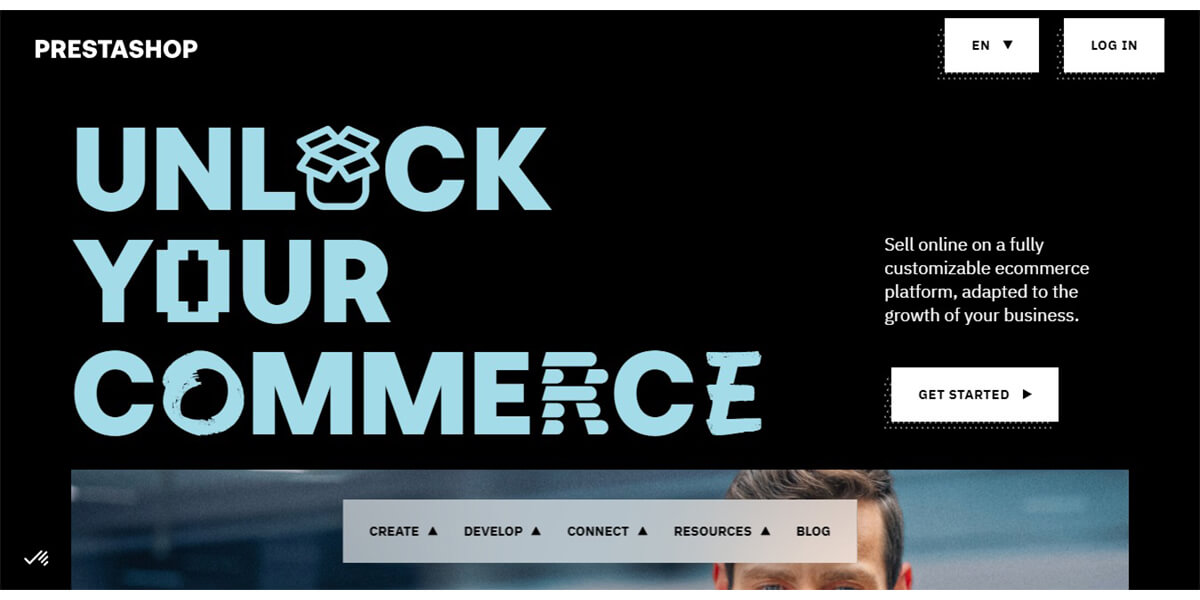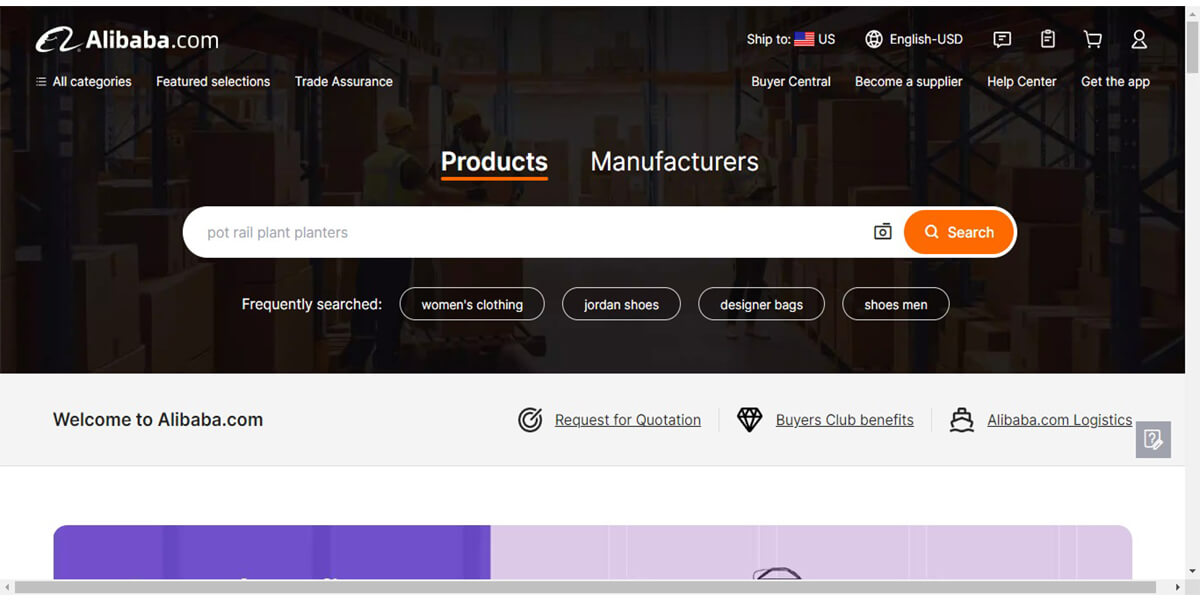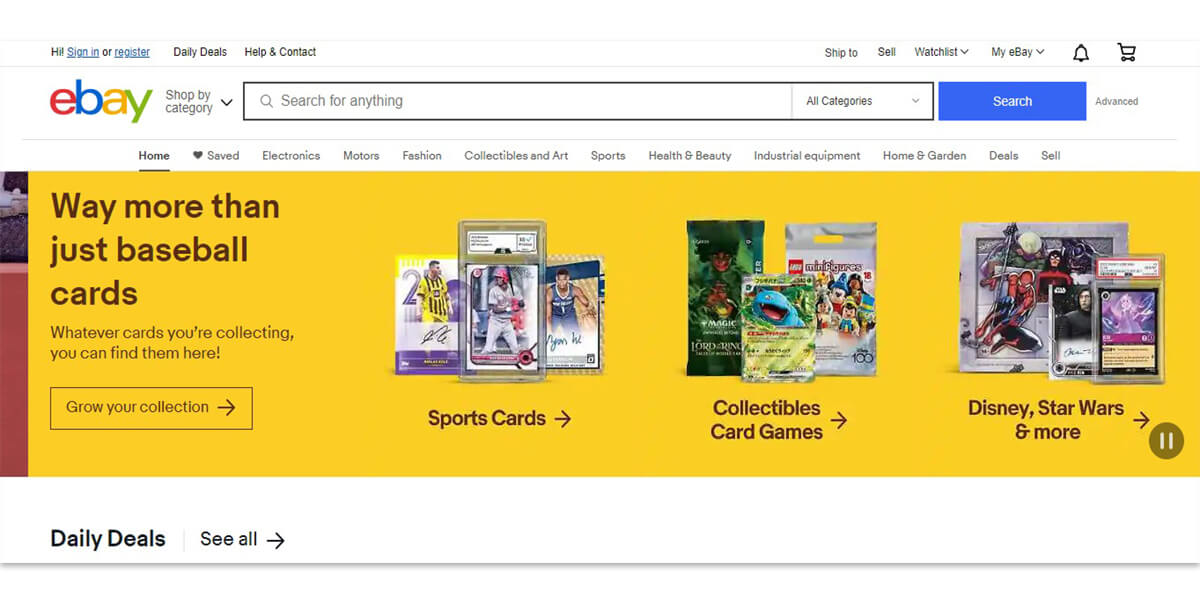What Is PrestaShop? Is It the Next Big Ecommerce Platform?

In the rapidly evolving world of e-commerce, choosing the right platform can be a game-changer for businesses of all sizes. One name that has been gaining prominence and sparking curiosity in the e-commerce sphere is PrestaShop. But what exactly is PrestaShop, and could it be poised to become the next big thing in the realm of online retail?
PrestaShop holds a significant importance in e-commerce. As an open-source solution, it provides businesses cost-effective access to a feature-rich platform. With its ability to scale to the needs of businesses, PrestaShop stands as a platform with significant potential in the dynamic landscape of e-commerce.
Let’s explore PrestaShop in depth. We will examine its features, capabilities, and its potential to reshape the future of online retail.
Let’s get started.
What Is PrestaShop?

PrestaShop is a dynamic and versatile e-commerce platform. It has been steadily gaining recognition in the digital marketplace. With its open-source nature and a robust suite of features, it has the potential to redefine how businesses operate in the online retail space.
You have complete flexibility with a lot of options to build your e-commerce websites with PrestaShop. Entrepreneurs and retailers find it easy to launch an online store and start selling products or services to customers worldwide.
Key Features of PrestaShop
PrestaShop’s appeal lies in its rich feature set and flexibility. It empowers businesses to create and manage their online stores effectively.
Here are some of its key features and capabilities:
1. User-Friendly Interface
PrestaShop provides an intuitive and user-friendly admin interface. Online store owners find it easy to manage their online shops on PrestaShop without extensive technical knowledge.
2. Customizable Themes
You get many options with pre-loaded templates that you can customize. These options support building a visually appealing and professional store.
3. Product Management
You can easily add, edit, and categorize products. Adding product descriptions, images, prices, and attributes are also very easy. It supports unlimited product listings.
4. Inventory Management
PrestaShop provides tools for tracking and managing inventory. These tools include stock levels, restocking alerts, and product availability.
5. Payment Gateway Integration
It supports a wide range of payment gateways, including PayPal, Stripe, and various credit card processors. The store owners and customers feel comfortable with secure online transactions.
6. Shipping and Logistics
You can set up and offer multiple shipping methods in your store. You can also calculate shipping costs and integrate with major carriers on this platform. Additionally, you can offer real-time shipping rates to customers.
7. SEO-Friendly
PrestaShop is designed with search engine optimization (SEO) in mind. It offers features such as customizable URL structures, meta tags, and SEO-friendly URLs to improve your store’s visibility in search engines.
8. Multi-Language and Multi-Currency Support
It allows you to create a multilingual and multi-currency store to reach a global audience and facilitate international sales.
9. Marketing and Promotions
You can run marketing campaigns, discounts, and promotions. Additionally, you can create loyalty programs and newsletters to engage with customers.
10. Analytics and Reporting
PrestaShop provides built-in analytics tools to track sales, customer behavior, and store performance. You can also integrate third-party analytics solutions for more in-depth insights.
11. Mobile Responsiveness
Many PrestaShop themes are responsive, ensuring the optimum performance of your online store on various devices, including smartphones and tablets.
12. Security
PrestaShop offers security features to protect your store and customer data. These features include security patches and options for SSL certificates.
13. Community and Add-ons
There is an active PrestaShop community. A wide range of add-ons and modules are also available in the PrestaShop marketplace to extend your store’s functionality.
14. Customer Support
PrestaShop offers community support through forums and documentation. Additionally, you can access paid support services for technical assistance. Store owners don’t feel left out if they face any issues with the platform.
15. Scalability
PrestaShop can handle small to large online stores. You can scale your store’s infrastructure as your business grows.
16. GDPR Compliance
PrestaShop has features and tools to help you comply with GDPR (General Data Protection Regulation). You and your customers can be sure of their data privacy and protection.
17. Easy Access
PrestaShop is easily accessible via multiple devices. You can access it from your computer or a smartphone. It also has a mobile app, so you can manage your store easily on your mobile phone.
18. Cost
PrestaShop is free to use. You only need to pay for the hosting solutions if you wish to buy them from this platform.
PrestaShop vs. Other E-commerce Platforms
Businesses often find themselves faced with a multitude of options while they are planning to launch an online store. They are confused about choosing the right platform. Among all the available platforms, PrestaShop stands out as a compelling choice.
But how does it compare to other prominent e-commerce platforms?
Let’s delve into a comparative analysis to understand the strengths and unique features of PrestaShop in contrast to its major competitors.
This will help you select the right e-commerce platform to launch your online business.
We’ll briefly introduce each platform and discuss how PrestaShop is a better choice than each platform.
PrestaShop vs. Shopify

Shopify is a popular and widely used e-commerce platform. It provides a comprehensive set of tools for entrepreneurs and businesses. It helps you create, manage, and scale your online stores.
Let’s compare both platforms and see which one may suit you better.
- Open Source vs. Hosted Solution: PrestaShop is open-source, which means you have full control over the code and can customize your store extensively. However, it requires self-hosting, which can be more technically involved. Shopify is a hosted solution handling server management, security, and updates. This makes it more accessible for beginners and those without technical expertise.
- Customization: PrestaShop offers a high degree of customization and flexibility, making it an excellent choice for businesses with specific design and functionality requirements. Shopify only allows customization via themes and apps available in the Shopify App Store.
- Cost: PrestaShop itself is free, but you’ll need to budget for hosting, domain registration, and possibly premium themes or add-ons. Development and maintenance costs can vary. Shopify operates on a subscription model with monthly fees. The cost can increase over time, especially as your store grows and you add more apps and features.
- Ease of Use: PrestaShop has a user-friendly interface. Sellers find it easy to set up their shops with a little technical knowledge. Shopify is also considered easy to use, making it a good choice for newcomers to e-commerce.
- Support: PrestaShop offers community support through forums and documentation. Paid support services are also available. Shopify provides 24/7 customer support, which can be invaluable for resolving issues quickly.
- SEO: PrestaShop provides SEO-friendly features. Sellers with sound technical knowledge of SEO have the liberty to play around for better results. Shopify includes robust SEO features and tools. It is ideal for sellers with lesser knowledge of SEO.
- Scalability: PrestaShop can scale to accommodate small to large online stores. You can tweak your stores by investing more in hosting and customizations. Shopify suits almost every kind of businesses that don’t want to be more technically involved.
Bottom line: For e-commerce retailers seeking extensive customization and complete control over their online stores, PrestaShop is the better choice. Shopify, with its ease of use and comprehensive support, can be an excellent option for those looking for a hassle-free e-commerce solution.
PrestaShop vs. Amazon

If you are into e-commerce, you already know about Amazon. It allows third-party sellers to list and sell their products on its platform through programs like Amazon Marketplace and Fulfillment by Amazon (FBA).
Let’s compare Amazon with PrestaShop to help you decide which one is the better choice for online retailers.
- Ownership and Control: Being an open-source platform, PrestaShop gives you full ownership and control over your online store. Amazon is a third-party marketplace where you list and sell your products. It has specific rules and fees. You don’t have full control over the platform.
- Customization: PrestaShop provides a high degree of customization. You can fully customize your online store according to your needs and requirements. On Amazon, you have limited control over the look and feel of your product listings, as they need to adhere to Amazon’s standard templates and guidelines.
- Branding: With PrestaShop, you can build and promote your brand identity, including your own domain name, logo, and website design. Sellers find it harder to establish a unique brand identity on Amazon due to limited options.
- Fees: PrestaShop itself is free and open source, but you will incur costs for web hosting, domain registration, and potentially premium themes or add-ons. Amazon charges various fees, including referral fees, fulfillment fees (if using FBA), and subscription fees for professional seller accounts.
- Marketing and Customer Data: With PrestaShop, you have access to customer data. You easily build and maintain customer relationships, run marketing campaigns, and collect customer feedback. Amazon controls customer data on its platform, limiting your ability to build a direct customer base or run independent marketing campaigns.
- Competition: On PrestaShop, you have more control over your product listings and pricing strategies. You face less direct competition from other sellers on the same platform. Amazon is a highly competitive marketplace. Your products are listed alongside those of numerous other sellers, making it challenging to stand out.
- Scalability: PrestaShop can scale to accommodate the growth of your online store. Amazon can handle a high volume of transactions and offers fulfillment services through FBA, making it suitable for businesses of various sizes.
Bottom Line: PrestaShop offers more control, customization, and branding opportunities for e-commerce retailers. Hence, it is a better choice for those looking to establish and manage their own independent online stores. Your business is visible to a massive customer base of Amazon but it comes with more restrictions and competition.
PrestaShop vs. Alibaba

Alibaba(Alibaba.com) is an international B2B platform. It belongs to Alibaba Group that is one of the most popular eCommerce platforms around the world. Alibaba offers a wide range of products and allows you to sell in various categories. Creating a store on this platform is also easy without technical skills needed.
Let’s explore a comparison between PrestaShop and Alibaba to get a better understanding of both platforms.
- Ownership and Control: Alibaba is a platform you can use to offer your products, but you don’t have full control over the platform itself. PrestaShop provides you with more liberty and control over your store.
- Customization: PrestaShop offers a high degree of customization. You can customize the design and features of your store as you want. While you can create a storefront and product listings on Alibaba’s platforms, your customization options are limited compared to running your independent online store.
- Branding: PrestaShop allows you to create and promote your own brand. You can have your own domain name, logo, and website design. Alibaba provides you with limited options to promote your brand. Plus, your brand is promoted within Alibaba’s ecosystem.
- Fees: There are no charges to use the PrestaShop platform. Alibaba charges various fees for using its platforms, including transaction fees, annual membership fees (for some services), and advertising fees.
- Marketing and Customer Data: With PrestaShop, you can directly access your customer data. Alibaba controls customer data on its platforms. Hence, it limits your access to customer information and makes it challenging to build a direct customer base.
- Competition: On PrestaShop, you have more control over your product listings and pricing strategies. You face less direct competition from other sellers within your own store. Alibaba hosts a multitude of sellers, resulting in intense competition for product listings and visibility.
- Scalability: PrestaShop can scale to accommodate the growth of your online store, keeping all the control to yourself. While Alibaba also handles a high volume of transactions, it still keeps you confined within its own platform.
Bottom Line: PrestaShop is a better choice for e-commerce retailers looking to have a free platform with full control over their online stores. It is ideal for sellers who want to make their own identity and set their own profit margins. Alibaba is a better choice for sellers who want to rely on the platform’s reputation to get easy sales and are willing to pay fees to the platform.
PrestaShop vs Magento

Magento is a well-known open-source e-commerce platform known for its flexibility, scalability, and robust feature set. It was originally developed by Varien Inc. and later acquired by Adobe.
Let’s have a comparative analysis of Magento with PrestaShop:
- Ease of Use: PrestaShop is generally considered more user-friendly and easier to set up and manage. It is a suitable choice for e-commerce beginners or small business owners. Magento is more complex and requires you to have extensive knowledge to use its customization options. It’s often favored by larger businesses with dedicated technical resources.
- Customization: PrestaShop offers a high degree of customization. You can tailor your online store’s design, functionality, and features without being a tech enthusiast. Magento is known for its deep customization capabilities. It is more suitable for businesses with complex requirements and technical expertise.
- Ownership and Control: PrestaShop provides maximum control over your store. You can host it on your own server or choose a hosting provider. Magento also offers similar control and ownership benefits. However, it is generally favored by larger enterprises, which may opt for the cloud-based Magento Commerce for additional features and support.
- Cost: Both PrestaShop and Magento are free to use and require you to invest in web hosting, domain registration, and potentially premium themes or add-ons. But with Magento, you may require additional licensing fees for Magento Commerce.
- Community and Support: Both PrestaShop and Magento have a vast and active community with forums and resources for support. Paid support services are also available on both platforms. However, the cost of official support at Magento can be substantial.
- Extensions and Add-Ons: Both PrestaShop and Magento offer a variety of add-ons and modules. While Magento also allows third-party integrations, it can potentially add to your store’s complexity.
Bottom Line: Choosing between PrestaShop and Magento is a close call due to their similarities. PrestaShop is generally a better choice for smaller businesses that prioritize ease of use, affordability, and straightforward customization. Magento is favored by larger enterprises with complex requirements and the budget for advanced features and scalability.
PrestaShop vs WooCommerce

WooCommerce is a name known to almost every other e-commerce seller. It is a WordPress plugin meant for e-commerce. WooCommerce allows website owners to add e-commerce functionality to their existing WordPress websites. It’s known for its ease of use and seamless integration with WordPress.
Here is a comparison of WooCommerce with PrestaShop:
- Platform Integration: PrestaShop is a standalone e-commerce platform. It operates independently from any other CMS. While it can be integrated with other systems, it’s not inherently tied to a specific CMS. WooCommerce is a plugin for WordPress, which means it works seamlessly with WordPress websites. It’s a great choice if you run a WordPress website.
- Customization: PrestaShop offers a high degree of customization, allowing you to create a unique and feature-rich online store. WooCommerce inherits the customization capabilities of WordPress. Sellers need more technical knowledge to customize their online stores with Woocommerce.
- Ownership and Control: PrestaShop offers a higher degree of ownership and control. You can host PrestaShop on your own server or choose a hosting provider. WooCommerce gives you control over your e-commerce store within the WordPress ecosystem. However, the level of control depends on your WordPress hosting environment.
- Cost: Both PrestaShop and Woocommerce are free to use. However, the costs at Woocommerce can vary based on your choice of WordPress hosting, themes, and additional plugins.
- Ease of Use: PrestaShop is designed to be user-friendly, with a straightforward admin interface. It’s often considered easier for beginners in e-commerce. WooCommerce’s ease of use depends on your familiarity with WordPress. It can be user-friendly for WordPress users but may require a learning curve for newcomers.
Bottom Line: PrestaShop may be a better choice for e-commerce retailers looking for a standalone, user-friendly platform with a strong focus on e-commerce features and customization. WooCommerce is a better option for those who already have a WordPress website and want to integrate e-commerce seamlessly into their existing online presence.
PrestaShop vs BigCommerce

BigCommerce is one of the popular and leading e-commerce platforms. It offers a hosted solution for businesses looking to create and manage their online stores. BigCommerce provides a comprehensive set of e-commerce tools and features.
Let’s compare PrestaShop and BigCommerce in the section below:
- Hosting and Control: While PrestaShop is a self-hosted and open-source platform, BigCommerce is a hosted solution. Your online store is hosted on BigCommerce’s servers. While this simplifies hosting management, it limits your control over the server environment.
- Customization: Both PrestaShop and BigCommerce provide customization options, but the level of flexibility at Bigcommerce is not as extensive as PrestaShop. Customizations rely on themes and apps available within the BigCommerce ecosystem.
- Ownership: With PrestaShop, you have full ownership of your online store and its data. You can also control hosting and maintenance. BigCommerce stores operate within BigCommerce’s platform. It means you don’t have the same level of ownership and control over the underlying infrastructure.
- Cost: PrestaShop itself is a free platform. BigCommerce operates on a subscription model with monthly fees. The cost can add up over time, especially for larger businesses.
- Ease of Use: PrestaShop has a user-friendly admin interface. Users with little to diverse knowledge can handle it well. BigCommerce is known for its user-friendly interface and straightforward setup process. It suits more to beginners rather than sellers with advanced technical knowledge.
Bottom Line: PrestaShop may be a better choice for e-commerce retailers looking for complete control over their hosting environment, extensive customization options, and a more cost-effective solution. BigCommerce simplifies hosting and offers a user-friendly experience, making it an attractive choice for businesses looking for a hassle-free, all-in-one solution.
PrestaShop vs eBay

eBay is a well-established name as a popular marketplace for e-commerce. It connects individuals and businesses in an auction-style or fixed-price format. eBay platform is meant for both consumer-to-consumer (C2C) and business-to-consumer (B2C) transactions.
Here is the comparison between PrestaShop and eBay to have a clear picture of both platforms:
- Ownership and Control: Being an open-source platform, PrestaShop gives you full ownership and control over your online store. You can choose your own hosting, customize your store, and manage it independently. eBay is a third-party online marketplace where you list and sell your products. You operate within eBay’s ecosystem and must adhere to its rules and policies, which can limit your control.
- Customization: PrestaShop offers greater customization and control over design, features, and functionality. While you can customize your eBay listings and store to some extent, your options are more limited compared to running your independent online store with PrestaShop.
- Branding: You have full liberty to establish and promote your brand at PrestaShop. At eBay, establishing a brand is more challenging as you can promote it within eBay’s ecosystem.
- Fees: While PrestaShop is free, eBay charges various fees, including listing fees, final value fees, and optional promotional fees. These fees can impact your profitability on the platform.
- Customer Data: With PrestaShop, you have complete access to customer data. eBay controls customer data on its platform, limiting your access to customer information and making it challenging to build a direct customer base.
- Competition: On PrestaShop, you face less direct competition from other sellers within your own store. eBay is a highly competitive marketplace with numerous sellers offering similar products, which can make it challenging to stand out.
Bottom Line: PrestaShop is generally a better choice for e-commerce retailers looking to have full control over their online store, establish a unique brand identity, and manage customer relationships independently. eBay, on the other hand, provides access to a massive global marketplace but comes with more restrictions, fees, and competition.
How to Get Started on PrestaShop?
It is very simple to set up your store using the PrestaShop platform and start selling your products. For your convenience, here is a brief step-by-step guide to get started at PrestaShop:
Step 1: Download and Install PrestaShop
Go to the official PrestaShop website and download the latest version of PrestaShop.
The instructions will be provided to you on your email ID. This usually involves uploading the installation files to your web server.
Step 2: Configure Your Store
Once installed, access your PrestaShop admin panel. You can do this by going to http://yourstore.com/admin and logging in with the credentials you set during installation.
Configure your store’s basic information, including store name, address, and contact details. Go to Preferences > Store Contacts to update this information.
PrestaShop supports multiple languages and currencies. Configure the ones that are relevant to your target audience under Localization > Languages and Localization > Currencies.
Step 3: Add Products
Organize your products into categories. Go to Catalog > Categories to create new product categories.
Add your products one by one. Go to Catalog > Products and click on “Add new product” to enter product details, including title, description, price, and images.
Step 4: Configure Payments and Shipping
Under Modules > Payment, configure the payment methods you want to offer to your customers. PrestaShop supports various payment gateways.
Go to Modules > Shipping to set up shipping carriers and methods. Define shipping costs and delivery zones applicable to your store.
Step 5: Customize Your Store
PrestaShop offers a variety of themes. You can find them under Design > Theme & Logo. Select a theme that fits your store’s style and customize it according to your preferences.
PrestaShop modules enhance your store’s functionality. Explore the Module Manager to add features like social media integration, SEO optimization, and more.
Step 6: Test Your Store
Before launching your store, make test purchases to ensure the payment and shipping systems work correctly.
Thoroughly check your store for any errors or issues. Test your store on multiple devices and web browsers to check compatibility.
Step 7: Launch Your Store
If you haven’t already, register a domain name for your store. Make sure it’s easy to remember and related to your business.
Start promoting your store using different techniques, including social media and email marketing.
Provide over-the-top customer service to achieve customer satisfaction and encourage repeat business.
Remember, PrestaShop has a large community. So if you encounter any issues or need help, there are forums and community resources available to seek assistance.
FAQs about PrestaShop
Read the answers to the questions that sellers frequently ask about PrestaSho. This will address your existing and potential queries about this amazing e-commerce platform.
How secure is PrestaShop for online transactions?
PrestaShop takes security seriously and offers features like security patches and options for SSL certificates. These measures help protect both the store and customer data, ensuring secure online transactions.
Can I customize the look of my PrestaShop store?
Yes, PrestaShop offers customizable themes and templates. Users can modify the appearance of their online store, including layout, colors, and fonts, to create a unique and visually appealing storefront.
Can I migrate my existing online store to PrestaShop?
Yes, PrestaShop provides tools and services for store migration. You can transfer products, customer data, and other essential information from your current e-commerce platform to PrestaShop.
Is technical expertise required to use PrestaShop?
While some technical knowledge can be beneficial, PrestaShop is designed to be user-friendly. Many tasks, such as product management and customization, can be done through its intuitive interface without extensive technical expertise.
Does PrestaShop offer analytics and reporting tools?
Yes, PrestaShop provides built-in analytics tools to track sales, customer behavior, and store performance. Additionally, users can integrate third-party analytics solutions for more in-depth insights into their store’s performance.
Can I manage my PrestaShop store on mobile devices?
Yes, PrestaShop offers mobile apps for both iOS and Android platforms. These apps allow store owners to manage their online stores, view orders, and perform various tasks on the go.
Conclusion
PrestaShop, standing at the forefront of e-commerce innovation, embodies adaptability and empowerment. Its open-source nature fosters a robust community, while its extensive features and user-friendly interface make it accessible to businesses of all sizes. PrestaShop’s unparalleled flexibility allows entrepreneurs to create tailored online experiences, ensuring brand uniqueness and customer engagement.
Crucially, PrestaShop’s scalability positions it as a strategic choice for evolving businesses, seamlessly accommodating growth without compromising performance. In a digital age where individuality and brand identity are paramount, PrestaShop empowers entrepreneurs to tell their stories authentically.
As the e-commerce landscape transforms, PrestaShop’s fusion of technical excellence and community support paints a promising picture. It isn’t merely a platform; it’s a dynamic catalyst driving the future of online retail. PrestaShop’s trajectory towards becoming the next big e-commerce platform is not just a trend but a testament to its ability to adapt, empower, and inspire businesses worldwide.
About the Author

Jack Han
Jack is a SEO manager and blog writer at Sup Dropshipping. He holds an MA in Linguistics and Education. He has over 10 years experience in E-commerce, and 5 years of experience in SEO. Jack is an enthusiast to share his recent knowledge learnt from peer experts in the industry.





Leave a Reply